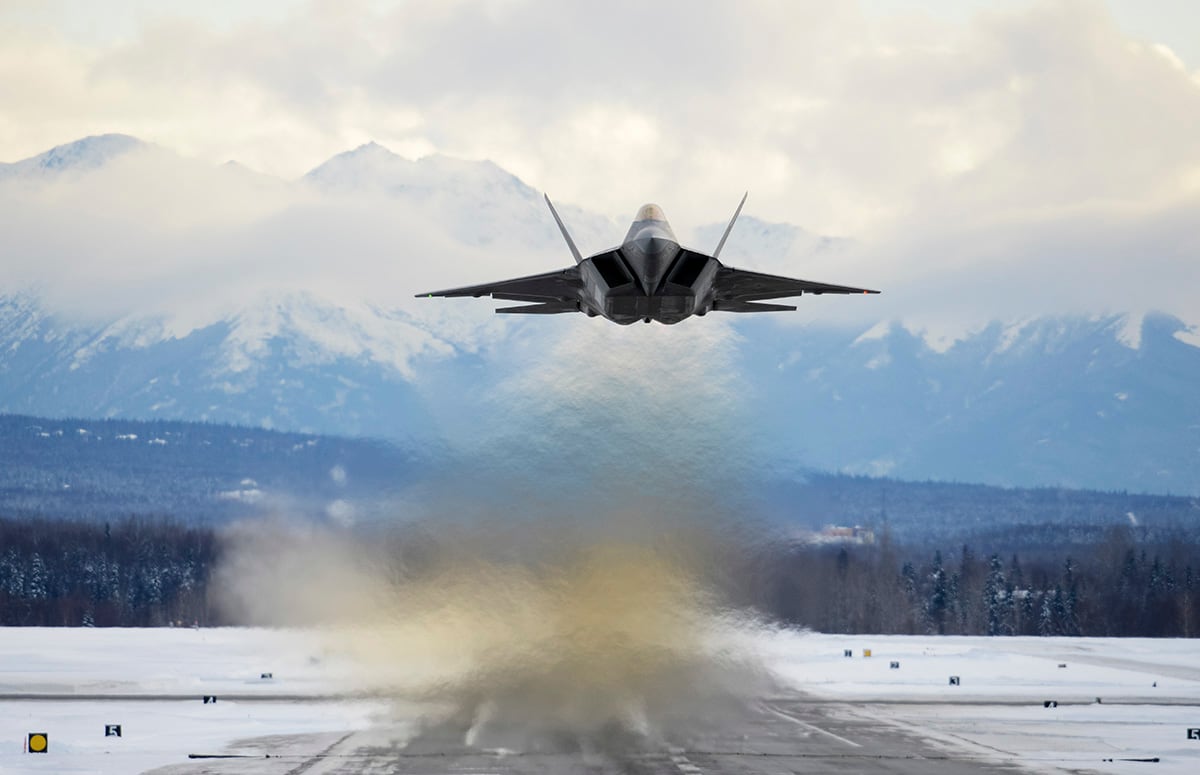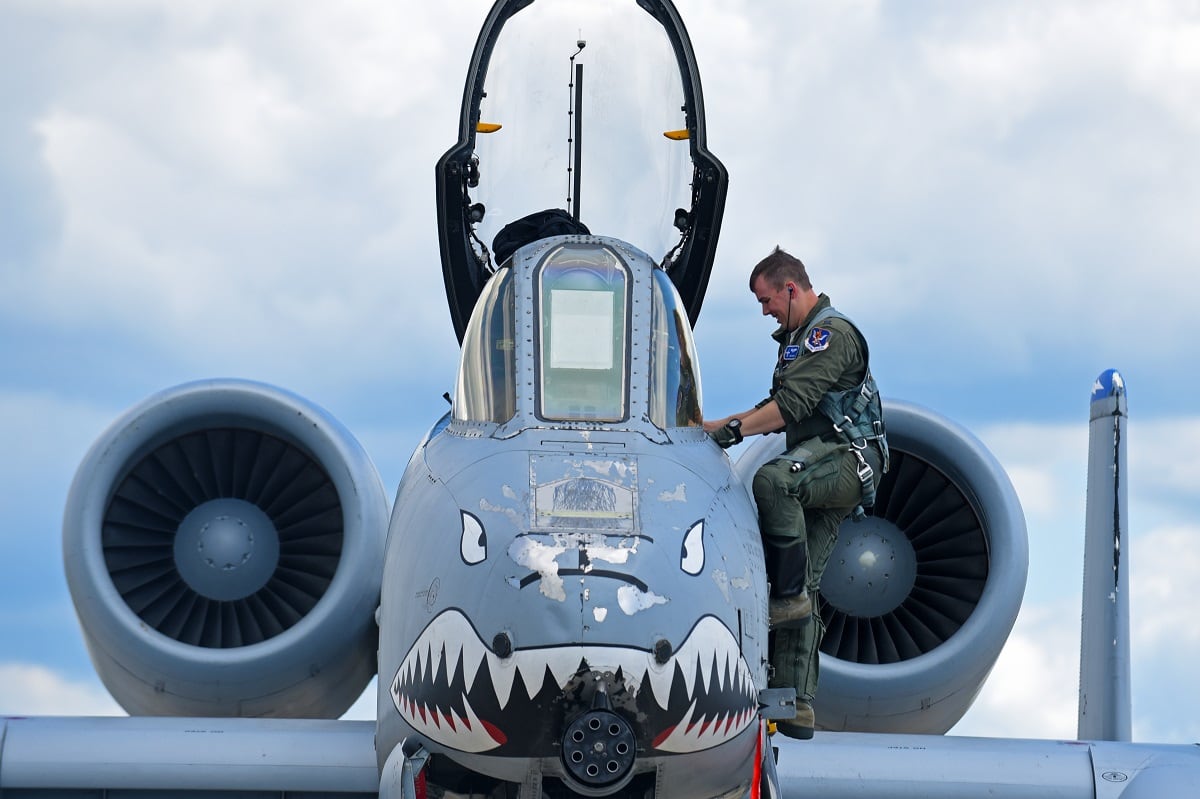The Air Force’s fleet of F-22 Raptors needs to be reorganized or the service will incur unnecessary risks in future operations, according to a new report by the Government Accountability Office — the auditing and investigative arm of Congress.
The Air Force currently fields a small fleet of 186 F-22s, generally regarded as some of the best fighter aircraft in the world.
While the fleet is an integral part of the U.S. military’s ability to defeat high-end adversaries, the Air Force is facing challenges in providing mission-capable F-22s and the pilots necessary to fly them.
The GAO recommends a restructuring of F-22s into larger squadrons, on par with other Air Force fighter aircraft. Additionally, the agency’s report recommended the Air Force explore alternatives to using F-22s to stand on alert for homeland defense, which saps the aircraft from its primary mission.
The Defense Department agreed with the report’s broad recommendations and said it would take steps to remedy the issues highlighted.

Limitations on availability
The first issue the GAO found was the size and structure of F-22 units, which were deemed too small.
F-22 availability is limited by the Air Force’s decision to organize the fifth-generation aircraft into smaller than normal wings and squadrons, which itself grew out of a decision made as part of the fiscal 2010 budget and the 2010 Quadrennial Defense Review to end production at 187 airplanes, rather than procuring the Air Force’s stated requirement of 381 airplanes.
RELATED

Raptor squadrons are organized into 18 to 21 primary mission aircraft, with one or two squadrons allotted per wing. The Air Force traditionally structures its fighter wings to have 3 squadrons with roughly 24 primary mission aircraft each. The smaller allotments to F-22 units stretches the maintenance and supply needs for each squadron.
These smaller wings and squadrons have resulted in the “lost efficiencies that come with larger organizations,” the report reads. “Larger squadrons and wings create efficiencies because people, equipment and parts can be shared.”
There are also limitations on F-22 availability due to maintenance challenges unique to the F-22′s low observable, or stealth, coating. Stealth coating requires near-constant maintenance and reduces the jets' availability for missions.
Without the stealth coating maintenance in particular, availability would have been significantly closer to meeting the annual availability standard, according to Air Force officials cited in the report.
A final availability issue lies in the the practice of partial unit deployments. For the past two decades, the Air Force has organized squadrons into smaller deployable groups called Unit Type Codes. These smaller groupings put further limitations on the F-22s left at home station, according to officials from all four operational locations cited in the report.
“For example, one of the F-22’s UTCs is designed to have only 6 of a squadron’s 21 aircraft but contains almost 50 percent of the squadron’s equipment, approximately 40 percent of the squadron’s maintenance personnel and 60 percent of its operational personnel,” the GAO reported. “This organizational approach therefore creates a disproportionate split.”
RELATED

Utilizing F-22s for the wrong mission
The other big limitation on the F-22 appears to be related to training options when the aircraft do get airborne.
F-22 pilots need to train for an air-to-air mission, which includes defeating adversary fighters and escorting other fighters or bombers over hostile territory. That requires adversary aircraft to train against. But there is a limitation on the availability of adversary aircraft.
Further, F-22s are frequently derailed from their primary air-to-air mission to participate in alert missions — a homeland defense mandate — in both Alaska and Hawaii.
“Operational squadrons in Alaska and Hawaii have F-22 pilots sitting alert in order to address the 24-hour per day alert commitment,” the GAO writes, pointing to the massive time consumption required of the alert mission. “With no other operational Air Force fighter squadrons currently based in Hawaii and Alaska, the alert mission falls to the F-22 units.”
The focus, though, needs to be on the high-end air superiority challenges the United States faces from near-peer threats, which are outlined as a primary focus in the new National Defense Strategy, according to the GAO.
“Left unaddressed, the F-22’s current availability and pilot training challenges will likely become more significant as fourth-generation fighters become less survivable and the Air Force’s reliance on its small fleet of F-22s to execute the air superiority mission grows,” the report reads.
The Pentagon agreed with the GAO’s findings, and said the Air Force is looking at changing organizational structures of the F-22 units, as well as possibly using other aircraft for homeland alert missions in Alaska and Hawaii.
Kyle Rempfer was an editor and reporter who has covered combat operations, criminal cases, foreign military assistance and training accidents. Before entering journalism, Kyle served in U.S. Air Force Special Tactics and deployed in 2014 to Paktika Province, Afghanistan, and Baghdad, Iraq.





